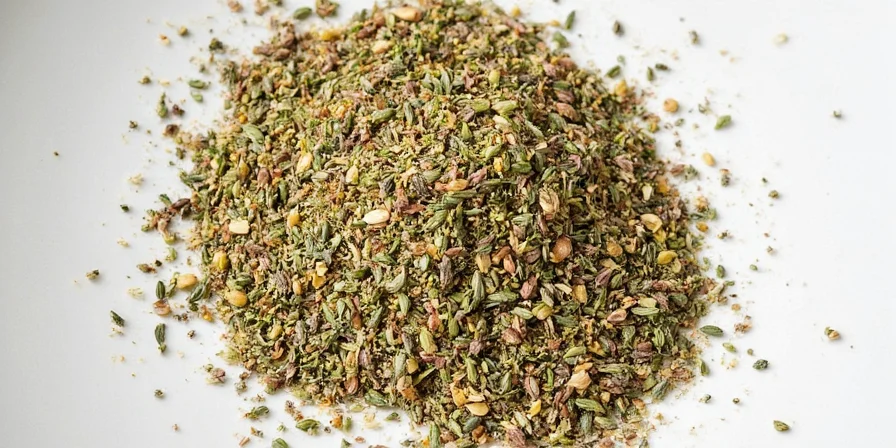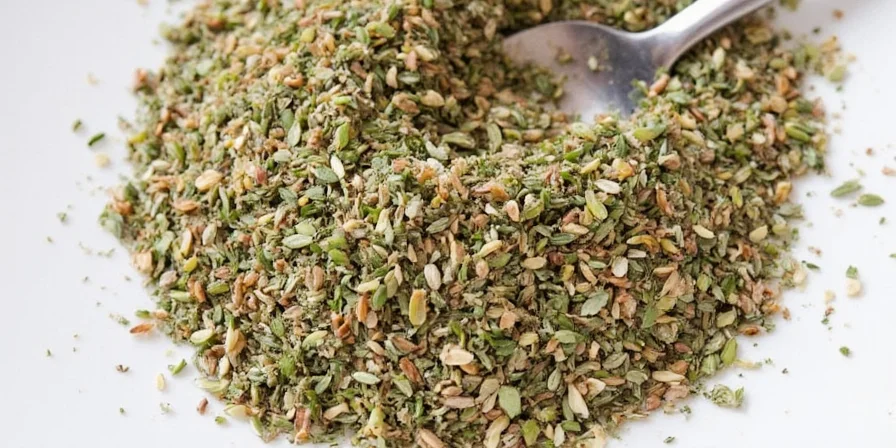Table of Contents
- What Is Herbes de Provence and What's Really in the Blend?
- 7 Practical Uses for Everyday Cooking (With Recipe Examples)
- Herbes de Provence vs Italian Seasoning: When to Use Which
- How to Store Herbes de Provence to Prevent Flavor Loss
- When to Choose Homemade vs Store-Bought Blends
- Most Common Herbes de Provence Questions Answered
What Is Herbes de Provence and What's Really in the Blend?
Herbes de Provence is a classic French herb blend originating from the Provence region, featuring a distinctive combination of dried herbs that brings authentic Mediterranean flavor to dishes. The traditional blend contains equal parts dried thyme, rosemary, marjoram, and savory - without lavender in authentic versions. However, many commercial blends include lavender (about 5-10%) for floral notes, which works well in baked goods but can make savory dishes taste soapy if overused. This explains why some store-bought versions taste different from restaurant versions - check labels for lavender content based on your intended use.

7 Practical Uses for Everyday Cooking (With Recipe Examples)
Stop wondering how to actually use this blend in real cooking. These simple applications work for weeknight meals with ingredients you already have:
- Roasted Chicken Secret: Rub 1 tablespoon under chicken skin with olive oil before roasting. The herbs' oils penetrate the meat better than fresh herbs.
- Quick Tomato Sauce Upgrade: Stir 1 teaspoon into 2 cups of marinara sauce while heating. Works better than Italian seasoning for a French-inspired twist.
- Homemade Focaccia Flavor: Mix 2 teaspoons into olive oil for drizzling over dough before baking. Creates complex herbal notes throughout the bread.
- Vegetable Roasting Boost: Toss 1-2 teaspoons with root vegetables (potatoes, carrots, parsnips) before roasting at 400°F. Add during last 15 minutes to prevent bitterness.
- Salmon Dry Rub: Combine 1 teaspoon with 1/2 teaspoon garlic powder and lemon zest. Works better than dill for firmer fish like salmon.
- Simple Compound Butter: Blend 1 tablespoon into 1/2 cup softened butter. Perfect for finishing grilled meats or melting over vegetables.
- Herb-Infused Oil: Steep 2 tablespoons in 1 cup olive oil at low heat for 20 minutes. Strain and use for dressings or finishing dishes.
Herbes de Provence vs Italian Seasoning: When to Use Which
Confused about which blend to reach for? This comparison cuts through the confusion with practical usage guidance:
| Herb Blend | Best For | Worst For | Substitution Ratio | When to Add During Cooking |
|---|---|---|---|---|
| Herbes de Provence | Roasted chicken, lamb, ratatouille, vegetable dishes, light sauces | Pasta sauces, pizza, tomato-based dishes (can taste floral) | Use 3:4 ratio (3 parts Herbes de Provence = 4 parts Italian) | Last 15-30 minutes of cooking to preserve delicate flavors |
| Italian Seasoning | Pasta sauces, pizza, meatballs, tomato-based dishes | Fish, light vegetable dishes (overpowers delicate flavors) | Use 4:3 ratio (4 parts Italian = 3 parts Herbes de Provence) | Early in cooking to develop flavors |
| Herbes de Provence (with lavender) | Shortbread, honey-glazed carrots, lemon desserts | Meat dishes, tomato sauces (lavender creates soapiness) | Not recommended for savory substitutions | Only in final minutes for savory dishes |
| Homemade Blend | Complete flavor control for specific dishes | When you need immediate cooking solution | 1:1 with commercial blends | Same as commercial versions |
How to Store Herbes de Provence to Prevent Flavor Loss
- Air-tight is non-negotiable: Transfer from flimsy store packaging to glass jar with tight seal immediately. Proper storage extends freshness from 6 months to 12-18 months.
- Skip the spice drawer: Heat from stove degrades herbs 50% faster. Store in cool, dark pantry away from cooking surfaces.
- Freeze for long-term: Portion into ice cube trays with olive oil, then transfer frozen cubes to freezer bag. Keeps full flavor for up to 2 years.
- Test freshness: Rub small amount between fingers. If little aroma emerges or it looks faded brown, it's time to replace. Fresh blend should have vibrant green-gray color.

When to Choose Homemade vs Store-Bought Blends
Most home cooks can get excellent results with quality store-bought blends, but making your own gives you control for specific dishes. Buy commercial blends when you need convenience for everyday cooking (look for brands without lavender unless you specifically want it). Make your own when preparing special dishes where flavor precision matters - simply combine 2 parts dried thyme, 2 parts dried rosemary, 2 parts dried marjoram, and 1 part dried savory. For most weeknight cooking, store-bought works fine if properly stored, saving 15-20 minutes of prep time while delivering authentic French flavor that elevates simple meals.
Most Common Herbes de Provence Questions Answered
What's the main difference between Herbes de Provence and Italian seasoning?
The key difference is in the herb composition and flavor profile. Herbes de Provence contains thyme, rosemary, marjoram and savory (sometimes lavender), creating earthy-woody notes ideal for roasted meats and vegetables. Italian seasoning contains basil, oregano, rosemary and thyme, delivering brighter, more tomato-friendly flavors. Use Herbes de Provence for French dishes and Italian seasoning for pasta and pizza.
Can I make Herbes de Provence without lavender?
Yes, and traditional French versions don't include lavender at all. Many American commercial blends add lavender (about 5-10%), but authentic Provence blends contain only thyme, rosemary, marjoram and savory. Skip the lavender for savory dishes like roasted chicken or vegetables to avoid potential soapiness.
Why does my Herbes de Provence taste bitter?
Bitterness usually comes from two sources: 1) Overheating - lavender degrades above 300°F creating bitter compounds, so add near the end of cooking 2) Old herbs - dried herbs lose potency after 6-12 months. Test freshness by rubbing a small amount between fingers; if little aroma emerges, it's time to replace your blend.
What's a good substitute if I don't have Herbes de Provence?
Make a quick substitute with 1 teaspoon dried thyme + 1/2 teaspoon dried rosemary + 1/2 teaspoon dried marjoram. For recipes calling for 1 tablespoon of Herbes de Provence, use this blend. Avoid adding lavender unless making dessert, as it can make savory dishes taste soapy.










 浙公网安备
33010002000092号
浙公网安备
33010002000092号 浙B2-20120091-4
浙B2-20120091-4